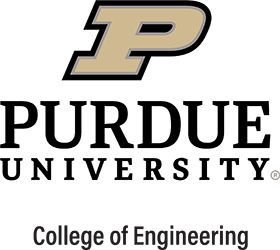Research as Physician-Entrepreneur Fits Student's Image of Impact
The impact of images in medicine has moved light-years beyond the first video technologies, like television, which prompted sociologists to posit, "The medium is the message." Frederick Damen, a student in the Purdue College of Engineering/Indiana University School of Medicine Medical Scientist Training Program (MSTP), sees vast potential for advancements in medical imaging aiding treatment of patients with cardiac disease. He wants to enhance the implementation of novel 4-D ultrasound techniques to realize these benefits, uncovering the life-saving messages behind that medium.

His goal is to creatively adapt knowledge and skills to today's sophisticated, but still underutilized, hardware to better characterize what is seen inside the human body. He hopes to rapidly translate these tools into clinical use for this noninvasive approach to diagnose and treat heart disease patients—and those with many other medical problems—more effectively.
Damen is using his Leslie Bottorff Fellowship during the graduate training phase of the MSTP program, prior to returning to IU School of Medicine for his final two years of medical school. He will return to the life of a medical student in the spring of 2021, concluding approximately five years of graduate training. He then plans to pursue a career in interventional radiology and entrepreneurship, developing various medical technologies that improve patient care.
"I'm trying to be that bridge between the two, to take engineering skills and make them useful for clinical applications," Damen says. His current Ph.D. research efforts study genetic and surgical models of cardiac hypertrophy, dilation, and infarction to provide a more comprehensive look at how the heart beats in each case, captured by four-dimensional ultrasound (4DUS) techniques.
"The ability to make sense of what a clinician is seeing is still in its infancy," according to Damen. His lab work envisions obtaining patients' tissue samples at the same time imaging is done so that researchers can observe the cellular processes, correlate them with the views captured, and design models for interpretation that "put some biological understanding behind the imaging data." Various cardiac diseases are now being studied using mice before they are applied to humans.
Damen started developing his interest in medical imaging as a high school senior through the field of Magnetic Resonance Imaging (MRI), helping develop diffusion MRI techniques to differentiate brain tumor grades. He then went on to earn a bachelor's degree in biomedical engineering at Georgia Tech, furthering his work in diffusion MRI to understand how the white matter networks of macaque monkey, chimpanzee, and human brains differ. Most recently, he entered the Medical Scientist Training Program (MSTP), conducted by Purdue's Weldon School of Biomedical Engineering and IU School of Medicine, in 2014. While at Purdue, he joined the Cardiovascular Imaging Research Laboratory (CVIRL), directed by Dr. Craig Goergen, who serves as his primary research advisor and mentor.
"I'm benefiting from an advisor who makes use of the connections we have between the two universities," Damen says. Goergen embraces collaborations between CVIRL and clinical experts, and the entire mentor team serving Damen reflects the spirit of interdisciplinary partnership. The team includes faculty members in the Weldon School, the School of Mechanical Engineering, the Department of Physiology at East Carolina University, and IU Health System.
"I can’t say I would be where I am today without all of their guidance," he says. His research tasks have placed him at one of the world’s leading centers for innovation with 4DUS technology, and the cooperation of the two schools gives him access to leading facilities and to experts who nurture students' well-rounded enthusiasm.
The Leslie Bottorff Fellowship provides funding to attend conferences researchers don’t typically attend. "I can immerse myself in the needs of clinicians," which is vital to his entrepreneurial plans to meet practical needs of hospitals and patients, Damen points out. This feeds his long-time excitement about bedside medical imaging technologies. "It's very cool that a field I have come to appreciate and be involved in is clearly something of importance in the clinical realm."
As a native of the Chicago area, he was delighted to find a base for the long process of MD/PhD training that was relatively close to home and had an excellent track record of engineering research and clinical applications: "It's a fantastic place to be."
Outside the lab, Damen is in his fourth year as a member of the Purdue men's water polo team and as a coach of the women's team. He is also the Public Relations Officer for the Purdue Graduate Student Government, serving graduate students across the full spectrum of disciplines and helping to address community needs.
He appreciates the chance to better grasp the big picture of possibilities among those with heart disease, which remains the number-one cause of mortality in the United States. For someone like him, Damen says, the Medical Scientist Training Program, in combination with the Bottorff fellowship, "just opens up so many doors."


